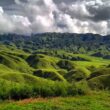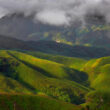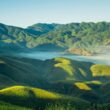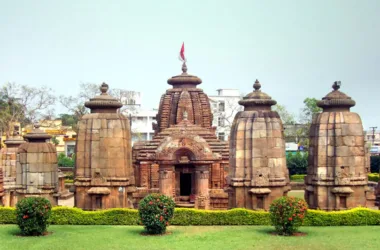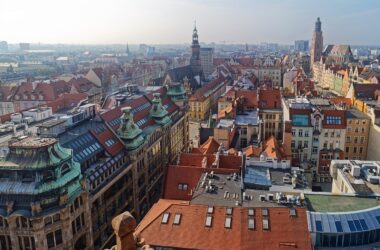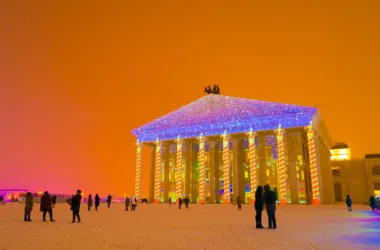Tucked between the northeastern states of Nagaland and Manipur, Dzukou Valley is one of India’s best-kept secrets. Famous for its emerald rolling hills, rare wildflowers, and breathtaking scenery, this valley offers an experience that feels untouched by time.
Dzukou Valley, often called the “Valley of Flowers of the Northeast,” sits at an altitude of approximately 2,452 meters and stretches as far as your eyes can see. For trekkers, photographers, and nature lovers, it is nothing short of a dream.
This comprehensive guide covers everything you need to know about Dzukou Valley, including how to get there, when to go, where to stay, and how to make the most of your visit.
Where Is Dzukou Valley?
Dzukou Valley lies on the border of Nagaland’s Kohima district and Manipur’s Senapati district.
Location Highlights:
- 25 km from Kohima, the capital of Nagaland.
- Accessible via two main trekking routes: Viswema and Zakhama villages.
- Part of the Japfü mountain range.
This remote location ensures the valley stays pristine and relatively uncrowded, compared to other popular trekking destinations in India.
Best Time to Visit Dzukou Valley
Each season paints the valley in a different mood:
✅ Summer (May–June):
- The most famous time, when the rare Dzukou Lily blooms, carpeting the slopes in pink and white flowers.
- Pleasant daytime temperatures (11–20°C).
✅ Monsoon (July–September):
- The valley is lush green, but heavy rains can make trails slippery and challenging.
- Leeches are common.
✅ Autumn (October–November):
- Clear blue skies and golden grasslands.
- Perfect for photography and comfortable trekking.
✅ Winter (December–February):
- Snow transforms the valley into a fairytale landscape.
- Temperatures can dip below freezing.
Verdict:
June and October are the most popular months to witness the valley at its best.
How to Reach Dzukou Valley
Nearest Airport:
- Dimapur Airport, about 74 km from Kohima.
Nearest Railway Station:
- Dimapur Railway Station, with good connectivity to Guwahati and major cities.
By Road:
- From Dimapur, drive or take a shared taxi to Kohima.
- From Kohima, you can hire a taxi to Viswema or Zakhama village, the two trekking starting points.
Trekking Routes
Viswema Route (Easier):
- The preferred route for beginners.
- Start from Viswema village.
- Initial 5 km steep climb, followed by a 3–4 km flat trail to the base camp.
Zakhama Route (Steeper):
- A more challenging trail with continuous ascent.
- Richer forest cover and more adventurous.
Duration:
- 4–6 hours depending on pace and fitness.
Trekking Permits and Fees
All visitors must pay:
✅ Entry Fee: ₹100–₹150 per person.
✅ Camping Fee: ₹100–₹200 per tent per night.
✅ Inner Line Permit (ILP): Mandatory for Indian tourists from outside Nagaland. Obtainable at Nagaland House offices or online.
Foreign Nationals:
- No PAP required since 2011.
- Must register with the Foreigner’s Registration Officer (FRO) in Kohima.
Camping in Dzukou Valley
Camping here is an experience of a lifetime:
Where to Camp:
- Designated camping zones near the Dzukou Rest House.
Facilities:
- Shared toilets and water points.
- A basic kitchen shed for cooking.
Tips:
- Bring your own tent and sleeping bags rated for sub-zero temperatures in winter.
- Carry all essentials as there are no shops in the valley.
- Respect the Leave No Trace principles—bring your waste back.
Where to Stay Near Dzukou Valley
If you prefer to rest before or after the trek, Kohima and Viswema offer homestays and guesthouses:
🏠 Viswema Homestays:
- Simple rooms and home-cooked meals.
- Prices: ₹800–₹1500 per night.
🏠 Kohima Hotels:
- More comfortable accommodation options.
- Good for acclimatizing before the trek.
🏠 Dzukou Rest House:
- Basic dormitory-style accommodation inside the valley.
- Mattresses and blankets provided.
Flora and Fauna of Dzukou Valley
The valley is known for its rich biodiversity:
🌿 Flora:
- Dzukou Lily (Lilium Chitrangadae), endemic to this region.
- Rhododendrons, Euphorbia, and countless seasonal wildflowers.
🐦 Fauna:
- Wild rabbits, Himalayan birds, and occasional sightings of clouded leopards.
This unique ecosystem is why conservation and sustainable tourism are essential.
Things to Do in Dzukou Valley
🌸 Photography:
- Capture sunrise and sunset over the undulating meadows.
🥾 Hiking:
- Explore side trails for panoramic views.
🏕️ Camping:
- Stargaze in total darkness away from city lights.
🌱 Nature Observation:
- Discover rare plants and watch birds.
Essential Tips Before You Go
✅ Acclimatize in Kohima for a day if you are not used to high altitudes.
✅ Start early to avoid trekking in the dark.
✅ Carry enough cash, as there are no ATMs or networks in the valley.
✅ Pack light but smart—essentials include water bottles, warm layers, rain gear, and a headlamp.
✅ Hire a local guide for safety and cultural insights.
Conclusion
Dzukou Valley is a rare gem that rewards those willing to venture off the beaten path. Whether you visit for a day hike, an overnight camp, or a week-long exploration, this untouched valley will leave you spellbound.
With careful preparation, respect for local customs, and a sense of adventure, you’ll create memories here that last a lifetime. So pack your bags and get ready to discover Nagaland’s hidden paradise.

